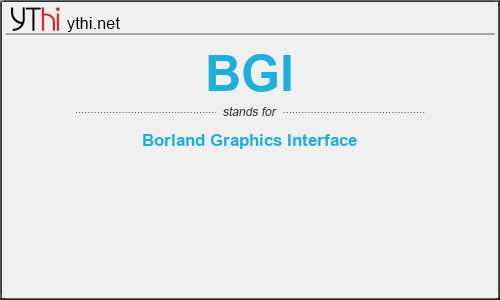What does BGI mean? What is the full form of BGI?
The Full Form of BGI is Borland Graphics Interface.
The Borland Graphics Interface, also known as BGI, is a graphics library bundled with several Borland compilers for the DOS operating systems since 1987. BGI was also used to provide graphics for many other Borland products including the Quattro spreadsheet. The library loaded graphic drivers (*.BGI) and vector fonts (*.CHR) from disk in order to provide device independent graphics support. It was possible for the programmer to embed the graphic driver into the executable file by linking the graphic driver as object code with the aid of a utility provided by the compiler (bgiobj.exe). There were graphic drivers for common graphic adapters and printers of that time, such as CGA, EGA and VGA. There also were BGI drivers for some kinds of plotters.
The last Borland’s C++ IDE for DOS is Borland C++ 3.1 (1992). The last C++ environment which supports BGI is Borland C++ 5.02 (1997), which works under Windows but can compile DOS programs. BGI was accessible in C/C++ with graphics.lib / graphics.h, and in Pascal via the graph unit.
BGI is less powerful than modern graphics libraries such as SDL or OpenGL, since it was designed for presentation graphics instead of event-based 3D applications. However, it has been considered simpler to code
BGI
means
Borland Graphics Interface![]()
Translate Borland Graphics Interface to other language.


Leave a Reply
You must be logged in to post a comment.